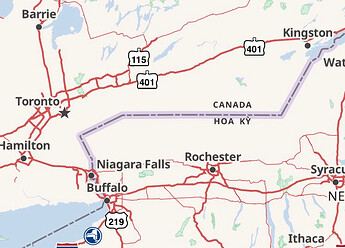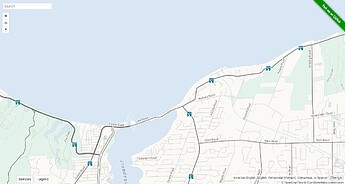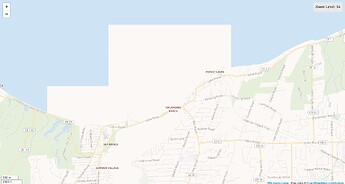There are different kinds of mapper feedback. Sometimes mappers want the instant gratification of knowing they successfully added something to the database. A rough-around-the-edges style like Osmarender or a raw debugging style like the OpenMapTiles inspector can easily satisfy this need with negligible consideration given to design. Other times, the mapper wants to know that their mapping is making it all the way to a realistic, consumer-facing map. This is where the craft of visual design matters most, but also where there should be the widest range of options to choose from.
Sometimes the mapper just needs to know they haven’t horribly broken the map, and either will do. The other day, someone broke one of the Great Lakes. (It happens all the time.) If OSM Carto would’ve rerendered at low zoom levels in a timely fashion, the mapper could’ve more quickly seen their mistake. Fortunately, another astute mapper found and fixed the error within a couple hours, but not before it made it into fast-updating data consumers like OSM Americana and Wikimedia Maps:
Thanks to a new shoestring rendering server, OSM Americana fixed itself later that day, but artifacts remained on Wikimedia Maps for several days (even after clearing the local cache):
Americana is happy to serve as an end-to-end test for OSM data, but as any software developer knows, this kind of testing is a last resort. Something that makes it to this stage has a larger blast radius: OSM has long been the butt of jokes among Wikipedia’s editors and readers because we occasionally pull the drain plug on one of the Great Lakes.
Americana’s maintainers do consider mapper feedback to be a goal, but at a higher level than quality control. Would rendering a particular tag support the community’s stated desire to see some feature or attribute depicted on a transportation map? If the tagging scheme or tile schema doesn’t facilitate a treatment that’s reasonably consistent with our artistic direction, we collaborate with the local mapping community on a solution, or at least we document what we see as actionable requirements, so that someone else can come up with a solution upstream. If we consider something out of scope for the project, at least we’ve tried to make it easier to someone to stand up their own viable fork.
Americana is not the only data consumer that operates at this level. StreetComplete is another great example of a project that deeply cares about its relationship with the OSM community, and there are plenty more at the local level.
Feedback means little unless it’s part of a feedback loop in which users and mappers also have some influence over the state of affairs. Many of us were drawn to OpenStreetMap because we felt that proprietary mapping platforms were unresponsive to our feedback and even less responsive to our ideas that didn’t fit inside their feedback forms. It’s wonderful that OSM Carto can more or less provide mapper feedback at the level of raw data (new road opened!), but this thread exposes the perception that this feedback loop has become dysfunctional at the editorial level.



